When it comes to checking tire tread, there are a number of methods that can help you know if it’s time to replace a tire. Heavily worn tread will prevent a tire from performing as designed and can lead to unsafe driving conditions. One of the simplest, most common ways to check tread depth requires nothing more than a penny and a few moments of your time.
In the United States, tire tread depth is measured in 32nds of an inch. New tires typically come with 10/32” or 11/32” tread depths, and some truck, SUV and winter tires may have deeper tread depths than other models. The U.S. Department of Transportation recommends replacing tires when they reach 2/32”, and many states legally require tires to be replaced at this depth.
The idea of the penny test is to check whether you’ve hit the 2/32” threshold. Here’s how it works:
Place a penny between the tread ribs on your tire. A “rib” refers to the raised portion of tread that spans the circumference of your tire. Tire tread is composed of several ribs.
Turn the penny so that Lincoln’s head points down into the tread.
See if the top of his head disappears between the ribs. If it does, your tread is still above 2/32” , If you can see his entire head, it may be time to replace the tire because your tread is no longer deep enough.
When performing the penny tire test, remember not only to check each tire, but to check various places around each tire. Pay special attention to areas that look the most worn. Even if parts of your tread are deeper than 2/32”, you should still replace the tire when any areas fail the penny test.
Consistent wear around the whole tire is normal, but uneven tread wear could be a sign of improper inflation, wheel misalignment, or a variety of other things. If you see uneven tread wear, you should have a technician inspect your vehicle.
A simple way to check your tire tread depth is by using a tread depth gauge. You can find tire tread depth gauges at your local auto parts store. There are many models available, but an inexpensive simple graduated probe gauge will work just fine. All you have to do is stick the probe into a groove in the tread and press the shoulders of the probe flat against the tread block and read the result. All gauges should measure in both 32nds of an inch and millimeters.
You can find tire tread depth gauges at your local auto parts store. There are many models available, but an inexpensive simple graduated probe gauge will work just fine. All you have to do is stick the probe into a groove in the tread and press the shoulders of the probe flat against the tread block and read the result. All gauges should measure in both 32nds of an inch and millimeters.
Another indicator of worn out tread already lives in your tires themselves. Every performance, light truck, or medium commercial tire comes equipped with indicator bars (or wear bars) embedded between the tread ribs at 2/32”. They’re there to help you monitor tread depth and make decisions about tire replacement. Just look to see if the tread is flush with the indicator bars. If they are, it’s time to replace the tire.
While the penny tire test does deliver on what it promises – indicating whether tread has reached the legal limit – it may not be the best indicator of whether your tires are safe for the road.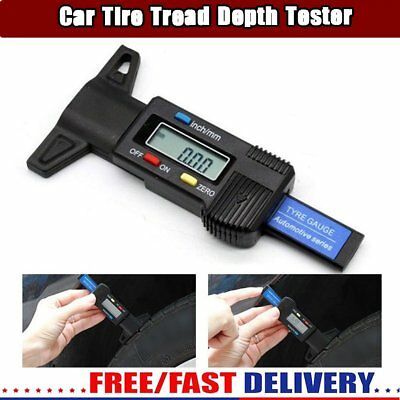 Tire performance can diminish significantly before your tread hits 2/32”. Even though the law deems fit for safe driving may not prevent you from hydroplaning or losing control in rainy, slushy conditions. If you think your tires may be close to needing replacement, have them checked out by a licensed mechanic.
Tire performance can diminish significantly before your tread hits 2/32”. Even though the law deems fit for safe driving may not prevent you from hydroplaning or losing control in rainy, slushy conditions. If you think your tires may be close to needing replacement, have them checked out by a licensed mechanic.
Written by Steven Schiller
Fact checked by Henry Speciale
PPMC-Transport is supported by its audience. When you buy through our links, we may earn an affiliate commission. Learn more
A tire tread is composed of ribs or grooves throughout the circumference of the tire. This raised portion of the tread expels water making the vehicle safe to drive under difficult weather conditions such as rain and snow.
However, when the tire tread wears down, it loses traction on the road and forces the braking and steering system to work harder especially on wet conditions.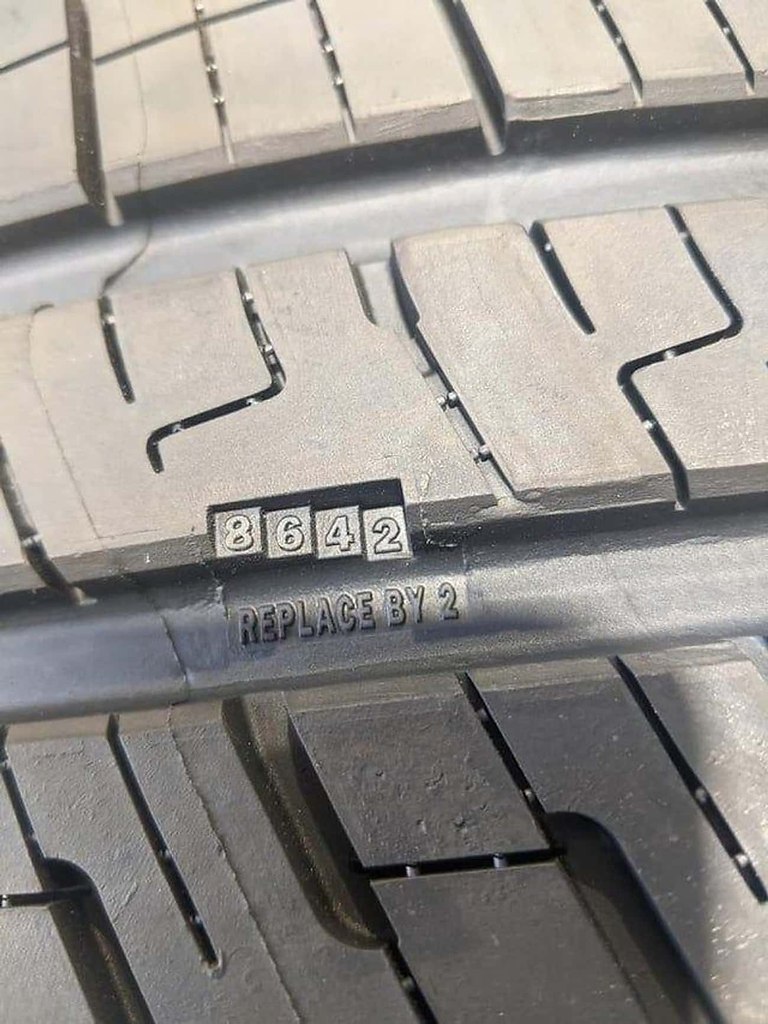 It becomes unsafe to drive when the tire tread depth reaches 2/32 inches.
It becomes unsafe to drive when the tire tread depth reaches 2/32 inches.
But, how to check tire tread depth? Tire tread depth can be measured using a penny, a quarter, a tire tread wear indicator, or a tire tread depth gauge.
Table of Contents
In the US, you can measure tread depth on a tire using a penny.
Insert the penny to the tire groove with Abraham Lincoln’s head going in first.

Some recommend replacing tires as early as this tire tread depth measurement because of diminished vehicle performance. The tires may not survive harsh driving conditions.
Another way to check the tread on your tires is using a quarter test.
In this test tread on tires, the tire’s tread depth is measured using George Washington’s head.

Conducting a penny test or checking tire tread with a gauge can reassure you that you measure tire tread correctly.
You can also check wear on tires without any tools because tires have a built-in tire tread indicator or wear gauge.
They can be seen as six bars throughout the tread ribs. The bar becomes visible as it reaches the minimum legal tread depth of 2/32 inches or 1.6 millimeters.
Some tires were designed with different grades of bar, such as 8/32, 6/32, 4/32, and 2/32. So check all the tread grooves to make sure it follows the tire wear indicator chart.
The tire tread depth of brand new tires of pickup trucks or large vehicles is around 15/32 to 20/32 inches.
If you would like to get a precise tire tread depth measurement, use tire tread depth gauge.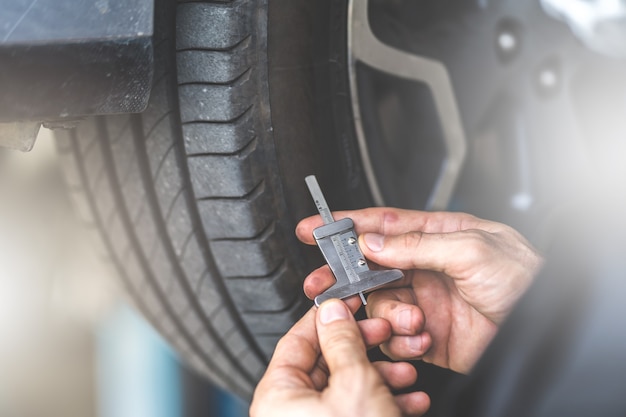
Of course, this tool cannot measure a bald or totally worn-out tread.
Look for the lowest tread depth. Insert the gauge pin into the groove, then press it towards the tread. This tool provides exact readings in inches and millimeters. They can be purchased in automotive shops for around $4.
What to prepare: Penny, Quarter, Tire Tread Indicator or Tread Depth Gauge
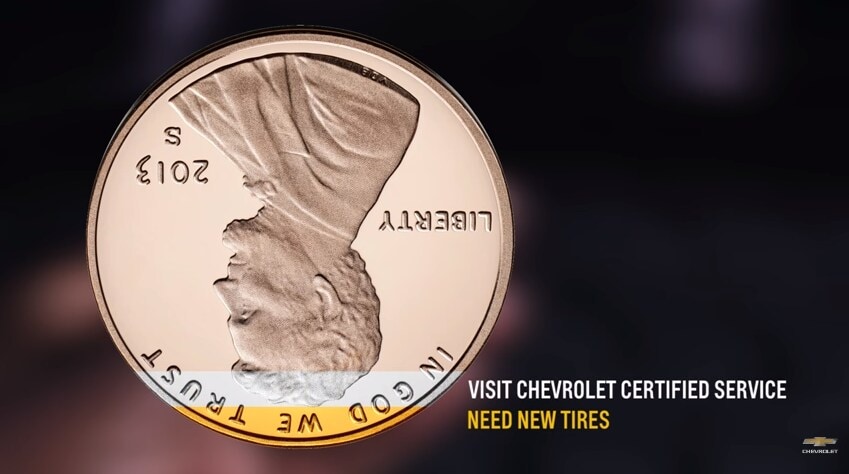
If a part of Lincoln’s head disappears in the groove, the tread is still above 2/32 inches.
If the tread covers Washington’s head, the tires are safe to use at 4/32 inches deep.

In general, tire tread depth should be checked every 3,000 miles or 5,000 km. It is also recommended to check the tread on tires seasonally or during changing of winter or summer tires.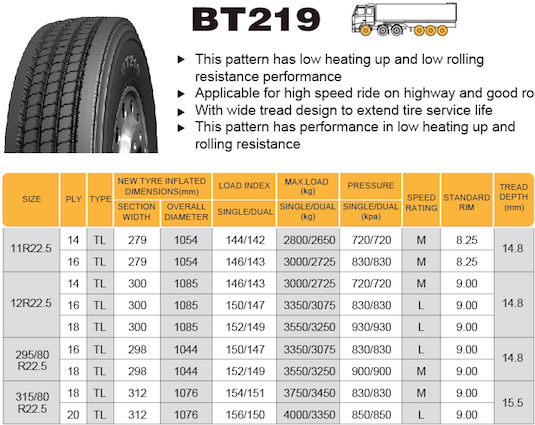
Keeping a close check on your tire’s health is possible if you know how to check tire tread depth.
You can measure the tire tread depth with or without a gauge. The coin tests are helpful in providing an estimate of tire tread depth. However, if you would like to prevent vehicle accidents, the best way to check tread on tires is by using tire tread depth gauge.
The standard minimum tire tread depth is 2/32 inches but it is safer to plan tire replacement as soon as they approach 4/32 inches deep.
If you would like to know more about hydroplaning, feel free to share your thoughts.
Categories FAQsI'm Henry, the content writer for PPMC Transport. We build our site entirely on experience and extensive market and customer research. My goal is to create a trusted platform where people can go to determine what is best for their vehicles in terms of safety and convenience. Keep an eye out for our useful guide!
We build our site entirely on experience and extensive market and customer research. My goal is to create a trusted platform where people can go to determine what is best for their vehicles in terms of safety and convenience. Keep an eye out for our useful guide!
- Speciale Henry
Category: Operation and maintenance
Article reading time: 3 minutes
Bookmark this
Tire tread is one of the vehicle's performance indicators. Regular checks of all four tires help diagnose potential problems that may require professional attention. Inspect tires at least once a month and before and after long trips. nine0003
Signs to look out for
Tread wear bars: These hard rubber bars show up as the tire tread wears. If they are visible, it means it's time to buy a new set of tires. If you do not know how to find them, pay attention to the special designation on the sidewall.
If you do not know how to find them, pay attention to the special designation on the sidewall.
Tire depth gauge indicates worn tread. According to European legislation, the tread depth around the entire tire circumference must be at least 1.6 mm. For winter tires, Goodyear recommends a minimum tread depth of 4mm. We recommend purchasing an inexpensive tread depth gauge that will allow you to check if your tires meet the minimum requirements. Be sure to measure both the inside and outside of the tread. nine0003
Small objects get stuck in the tread: Small objects often get stuck in the tread of tires. If such an object is stuck in the groove, carefully remove it so as not to damage the tire. If you find that some object (for example, a nail) is stuck directly in the rubber, leave it there until you reach the service station. Otherwise, your tire is likely to be flat.
Winter Drive Protection
Tires Goodyear UltraGrip Arctic 2 SUV
Winter Drive Protection Sound Comfort
Rating:
4. 5
5
Tires Goodyear UltraGrip Ice 2
Tires Goodyear UltraGrip Performance+ SUV
Tires Goodyear UltraGrip Arctic 2
Winter Drive Protection Run On Flat Sound Comfort
Tires Goodyear UltraGrip Performance+
Tire outer surface wear: If you find that the tires are worn on both edges, they may need to be inflated or checked for leaks. Tires deflate naturally, but under-inflated tires increase fuel consumption and increase the risk of an accident. Check the pressure regularly. If you only find worn edges on the front tires, you may be entering corners and curves too quickly. nine0003
Check the pressure regularly. If you only find worn edges on the front tires, you may be entering corners and curves too quickly. nine0003
Excessive wear in the center of the tread: If the center of the tread is worn more than the outer edges, the tire pressure may be too high. This increases the risk of a tire burst. Check the manufacturer's specifications, purchase a pressure gauge, and lower the pressure to the recommended level.
Uneven wear on one tire: The wear pattern on the tread may indicate problems elsewhere on the vehicle. If you find areas of uneven wear or completely worn out tread, it may be necessary to balance or center the wheels. Sometimes complete wear in some areas indicates wear on the shock absorbers. Contact a specialist. nine0003
Uneven wear on the contact surface of the tire. Tire wear rates are not always the same. The engine is located at the front of the car and it bears the bulk of the driving load, so the tires on the front axle wear out faster. If you feel they are more worn than they should be, have your suspension checked. If there is more wear on one side of the vehicle, it may be time to re-align the wheels.
If you feel they are more worn than they should be, have your suspension checked. If there is more wear on one side of the vehicle, it may be time to re-align the wheels.
Tire edge scalloping: If you find that the tire tread edges are scalloped or feathered, there may be uneven friction with the road surface. This is a sign that alignment needs to be done. nine0003
Author of the article: Goodyear team
The tire tread is the outer part of the wheel that provides traction in all weather conditions. The protectors inevitably wear out during the operation of the car, the working height of the slope decreases. The residual tread depth should be periodically monitored and the set of tires should be renewed in time - this will reduce the risk of losing control of the car and save the car owner from fines from the traffic police. nine0003
Tread wear rate depends on many factors:
Measuring the thickness of the tread layer will allow you to accurately determine the degree of tire wear and make a decision in time to replace them with new ones.
Different tires have different wear limits. Tread depth affects vehicle handling and road safety.
| According to Chapter 5 of the SDA, limiting norms for the height of the tread pattern have been established. For category M1 - passenger cars - as well as vehicles of categories N1, O1 and O2, the minimum allowable value is 1.6 mm. When using winter tires on snowy or icy surfaces - the limit is 4 mm. nine0003 |
Let us explain what categories of vehicles we are talking about:
N1 - vehicles intended for the carriage of goods, having a technically permissible maximum mass of not more than 3.5 tons;
O1 - trailers, the technically permissible maximum mass of which is not more than 0.75 tons;
O2 - trailers, the technically permissible maximum weight of which is over 0.75 tons, but not more than 3.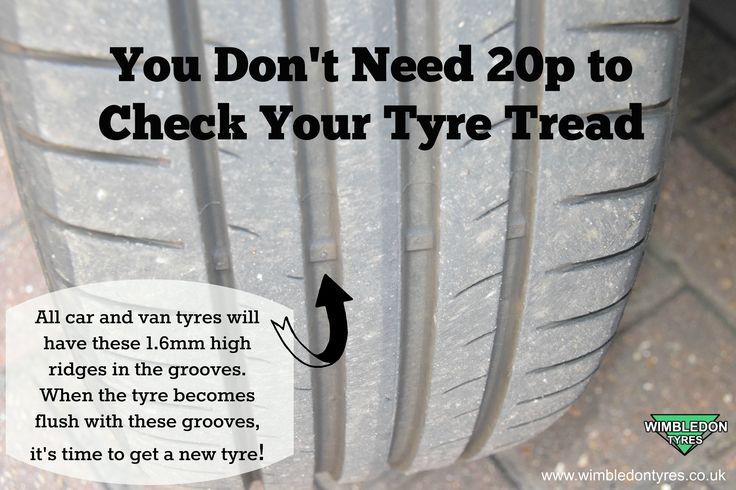 5 tons. nine0003
5 tons. nine0003
The traffic police officer has the right to measure the residual depth with a verified device. In case of a recorded violation, a fine is imposed on the car owner.
The new summer tire has an average tread depth of 7-8 mm. The service life of summer tires is usually 3-5 seasons with average mileage and moderate driving style.
| Residual height limitation by law is 1.6 mm. However, with a remaining outer layer of 3 mm, the machine is already difficult to control, grip deteriorates, and a safety hazard arises. nine0003 |
Do not wait until the critical value is reached. Make sure you change tires in advance.
Winter tires are used in severe weather conditions: low temperatures, icy conditions, on snowy road surfaces. Worn elements make the tire ineffective on slippery winter roads. Accordingly, a more serious approach to the condition of the tire tread is needed.
Non-studded friction tire (Velcro) with a tread depth of 8-9mm. A new studded model - from 9 to 11 mm, some firms produce a tread with a height of 12-18 mm.
| If the tread wear is up to 4-5 mm, the winter set of tires needs to be replaced. In addition, the loss of more than 50% of the metal spikes is also a reason to change the car's shoes. |
The average life of winter tires is 2-4 years.
Universal all-weather is used in a temperate climate both in winter and in summer, it is optimal at temperatures from +10 to -10˚C. This type of tire is not suitable for use in snowfall or severe frosts. SDA allows the use of all-season tires in the winter if there is a special marking:
| All-season tires last 3-4 years on average. In summer, at high temperatures, all-weather tires wear out much faster. |
You can estimate the remaining tread layer in various ways:
On some tire models there are special volumetric indicators in the form of jumpers. Check: if the tread layer is worn down to the level of the jumpers, the tire is not suitable for further use. nine0003
On the surface of certain types of tires, manufacturers knock out numbers of various depths. Depreciation is assessed visually - by the visibility of individual numbers.
With the help of measuring instruments: from a metal ruler, caliper, depth gauge to an electronic tread depth gauge.
Many motorists measure the remaining tread depth with a coin. Warning: this method of measurement is not accurate. It will not show you actual tire wear figures. nine0003
Tire tread height should be measured at least 6 different points, preferably 9 or even 12: in the center and from both edges of the tread, at different points around the tire circumference. The measurement results at all specified points must match. If they do not match, then the tire wears unevenly. The driver should find out why this is happening. Some causes of uneven tire wear are low or high pressure in them relative to the regular one, suspension failure, extreme driving style. nine0003
The measurement results at all specified points must match. If they do not match, then the tire wears unevenly. The driver should find out why this is happening. Some causes of uneven tire wear are low or high pressure in them relative to the regular one, suspension failure, extreme driving style. nine0003
Old tires have become unusable, the amount of tread remaining is approaching a critical line - no need to take risks, it's time to change your car's shoes. There is a great temptation to get by with small financial costs and purchase a set of used tires. Be careful!
Sellers advertise used tires in good or excellent condition. Do not be too lazy to personally measure the height of the tread layer. And remember: for winter tires, a residual tread depth of 4 mm is already 100% wear. nine0003
When buying used tires with tires, it is important to remember that tires of different manufacturers and seasonality initially have different tread heights (when they are new). And most importantly: the tires have, accordingly, different wear limits - the tread depth at which the tire begins to lose important characteristics.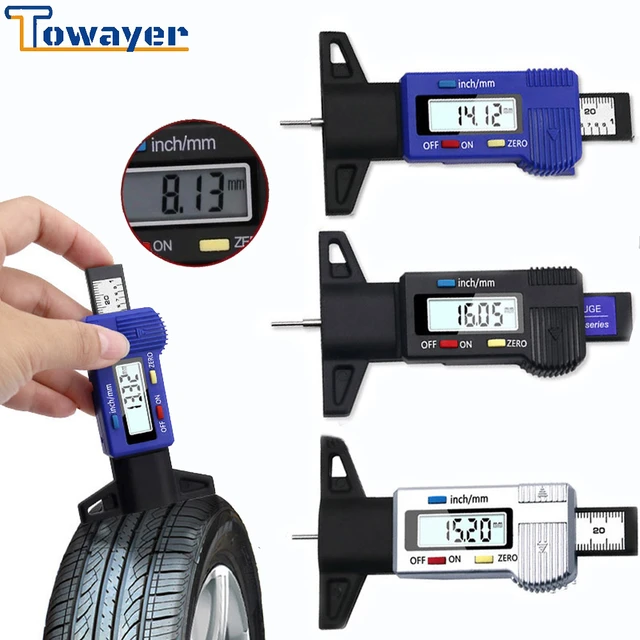 These differences are most noticeable in winter and summer tires. Keep these points in mind when measuring the remaining tread depth of used tires.
These differences are most noticeable in winter and summer tires. Keep these points in mind when measuring the remaining tread depth of used tires.
The quality of domestic roads, unfortunately, does not allow tires to be used for 7–10 years. If you still decide to buy a used kit, check the year of manufacture - it is better not to consider tires older than 8 years. nine0003
there is no guarantee for tires bought from hands;
the seller can cheat - for example, offer tires from different manufacturers in one set. Some especially enterprising salesmen even cut the tread on the worn rubber, as if the tires had not yet worn out;
you will have to spend a lot of time picking up tires from private sellers - much of what is put up for sale is only suitable for recycling; nine0003
Products may have hidden or visible defects. Visible are punctures, tears, cuts. A tire with a lot of damage can collapse in motion.